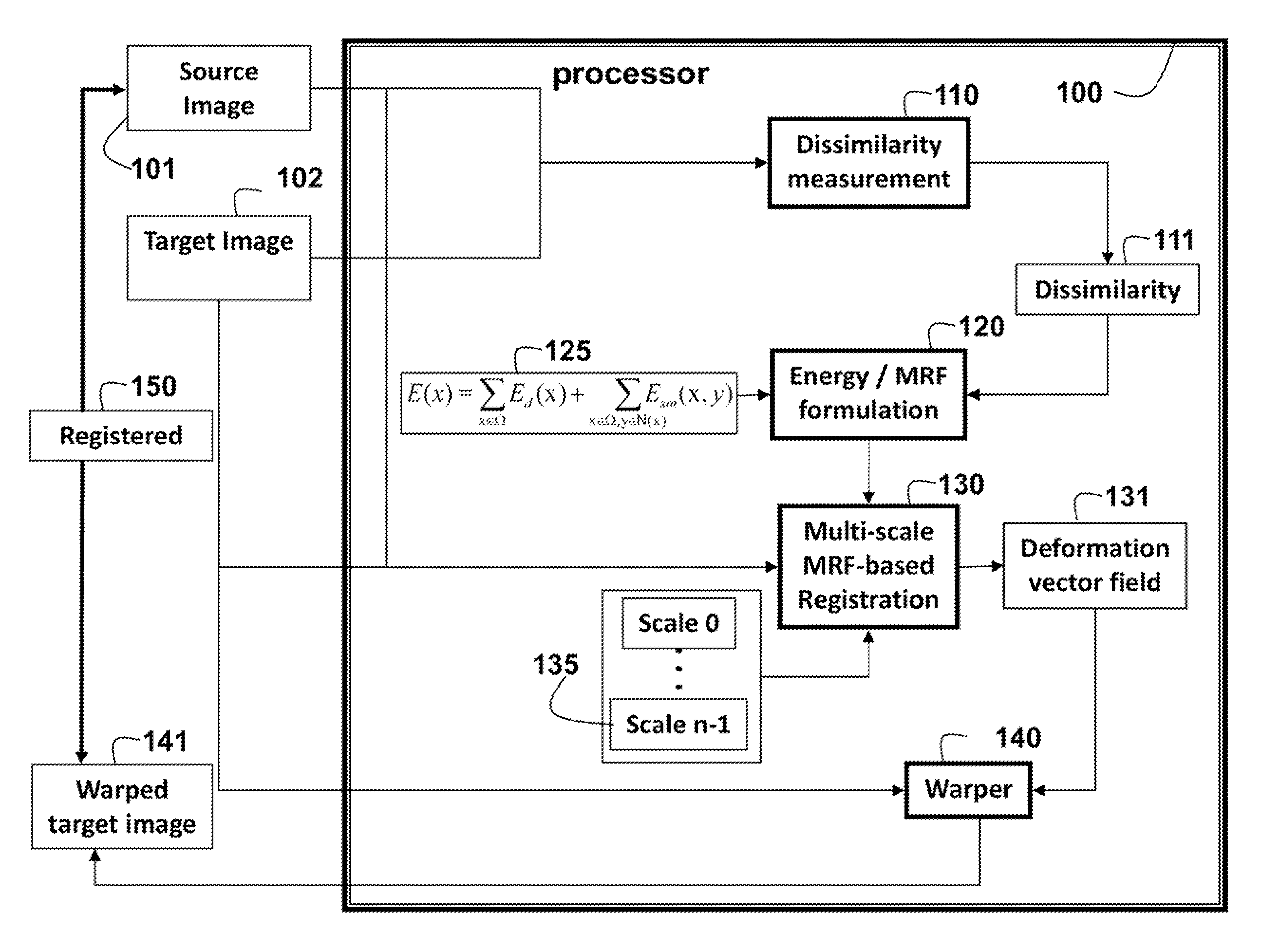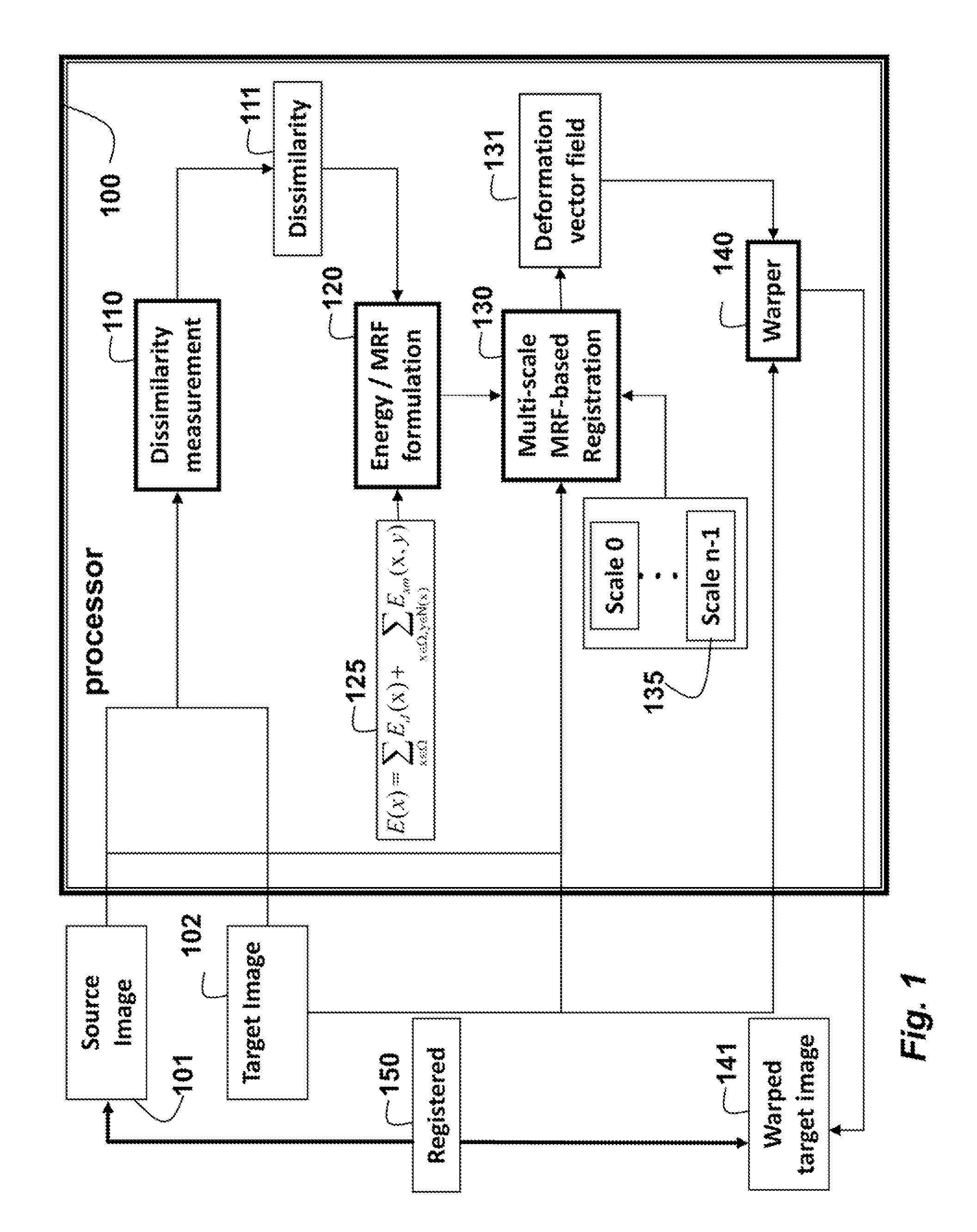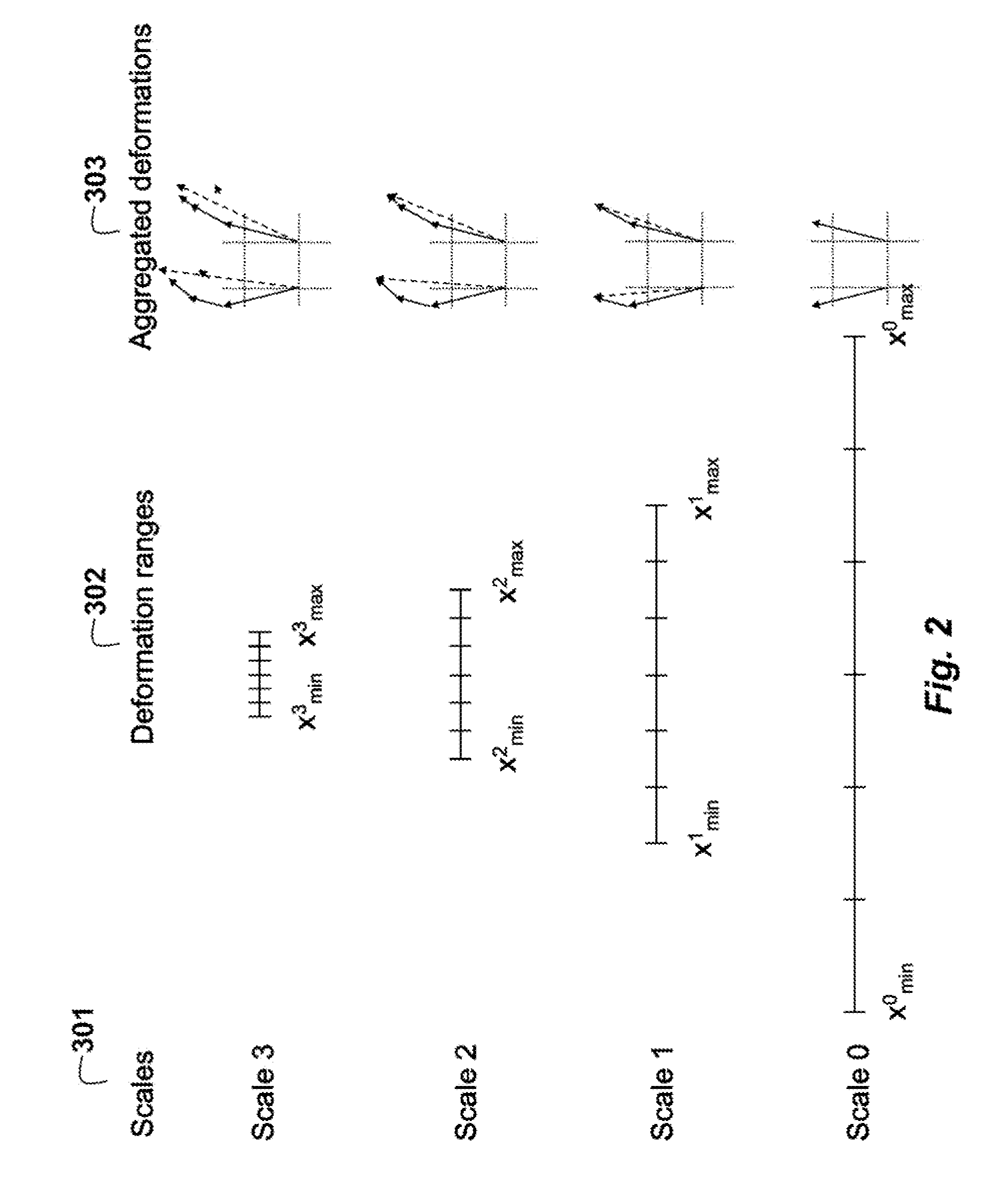Method for Registering Deformable Images Using Random Markov Fields
a random markov field and image technology, applied in image analysis, instruments, computing, etc., can solve the problems of additional challenges in determining solutions efficiently, and achieve the effect of reducing the number of labels, and sacrificing accuracy
- Summary
- Abstract
- Description
- Claims
- Application Information
AI Technical Summary
Benefits of technology
Problems solved by technology
Method used
Image
Examples
Embodiment Construction
[0013]FIG. 1 shows a method for registering deformable images according to embodiments of our invention. A dissimilarity 111 between a source image 101 and a target image 102 are measured 110. For example, we can use a sum of squared differences (SSD) for measuring the dissimilarity. Other dissimilarity metrics, e.g., normalized cross correlation or mutual information, in the case of multi-modal input data, can also be used.
[0014]The dissimilarity is minimized 120 using a discrete energy function 125. At multiple scales, see FIG. 2, multi-scale Markov random field (MRF) registration 130 is applied to the source and target images to determine a deformation vector field 131. Then, the target image is warped 140 to obtain a warped target image 141 registered 150 to the source image, that is, the registration is backwards.
[0015]Note, we can also measure the similarity, and then maximize the energy function. The steps of the method can be performed in a processor 100 connected to memory ...
PUM
 Login to View More
Login to View More Abstract
Description
Claims
Application Information
 Login to View More
Login to View More - R&D
- Intellectual Property
- Life Sciences
- Materials
- Tech Scout
- Unparalleled Data Quality
- Higher Quality Content
- 60% Fewer Hallucinations
Browse by: Latest US Patents, China's latest patents, Technical Efficacy Thesaurus, Application Domain, Technology Topic, Popular Technical Reports.
© 2025 PatSnap. All rights reserved.Legal|Privacy policy|Modern Slavery Act Transparency Statement|Sitemap|About US| Contact US: help@patsnap.com



